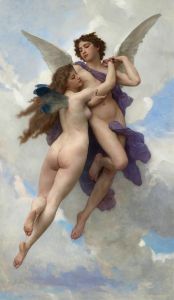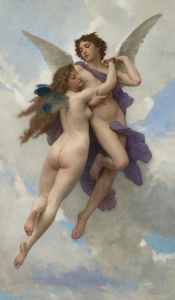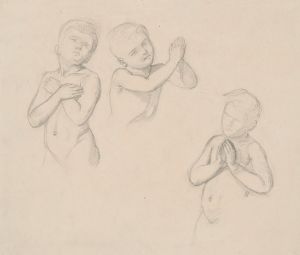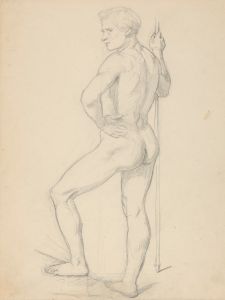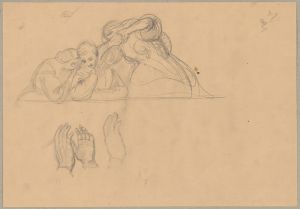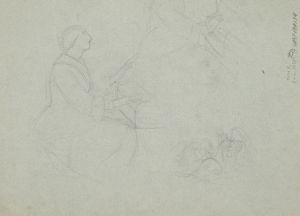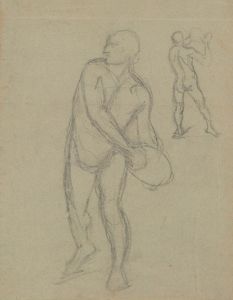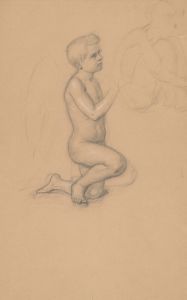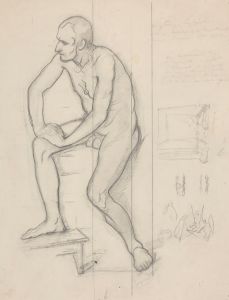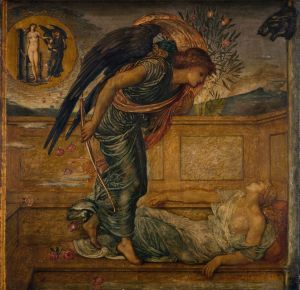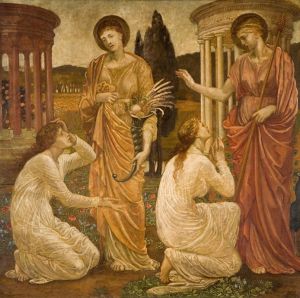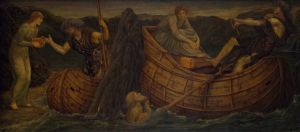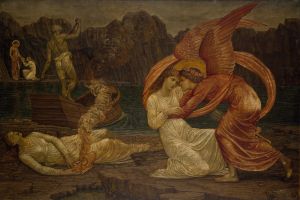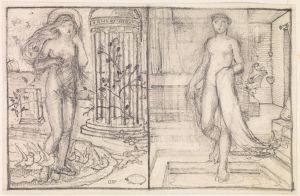
Szkice puttów i draperii do plafonu ‘Pochód weselny Amora i Psyche’
A hand-painted replica of Józef Simmler’s masterpiece Szkice puttów i draperii do plafonu ‘Pochód weselny Amora i Psyche’, meticulously crafted by professional artists to capture the true essence of the original. Each piece is created with museum-quality canvas and rare mineral pigments, carefully painted by experienced artists with delicate brushstrokes and rich, layered colors to perfectly recreate the texture of the original artwork. Unlike machine-printed reproductions, this hand-painted version brings the painting to life, infused with the artist’s emotions and skill in every stroke. Whether for personal collection or home decoration, it instantly elevates the artistic atmosphere of any space.
Józef Simmler, a prominent Polish painter of the 19th century, is known for his contributions to historical and portrait painting. One of his lesser-known works is Szkice puttów i draperii do plafonu ‘Pochód weselny Amora i Psyche’ (Studies of Putti and Drapery for the Ceiling ‘The Wedding Procession of Amor and Psyche’). This piece is a preparatory sketch, showcasing Simmler’s meticulous attention to detail and his skill in rendering classical themes.
The artwork was created as part of Simmler’s studies for a larger ceiling composition, which was intended to depict the mythological wedding procession of Amor (Cupid) and Psyche. This theme, rooted in Greco-Roman mythology, was a popular subject in 19th-century European art, reflecting the era’s fascination with classical antiquity and romantic ideals. The sketch focuses on the figures of putti—cherubic, childlike beings often associated with love and innocence—and the intricate folds of drapery, which were central elements in the planned ceiling design.
Simmler’s preparatory works, such as this sketch, highlight his academic training and his dedication to mastering the human form and fabric textures. He studied at prestigious art institutions, including the Academy of Fine Arts in Dresden and the École des Beaux-Arts in Paris, where he honed his skills in anatomy and composition. These influences are evident in the precision and elegance of the Szkice puttów i draperii.
While the final ceiling painting, Pochód weselny Amora i Psyche, is not widely documented, the surviving sketches provide valuable insight into Simmler’s creative process. They reveal his ability to balance classical motifs with a personal artistic vision, making him a significant figure in Polish art history.
Today, Szkice puttów i draperii do plafonu ‘Pochód weselny Amora i Psyche’ is appreciated as an example of Simmler’s preparatory work and his contribution to the 19th-century European art scene. It serves as a testament to his technical skill and his engagement with classical themes, even if the completed ceiling painting remains less well-known.





